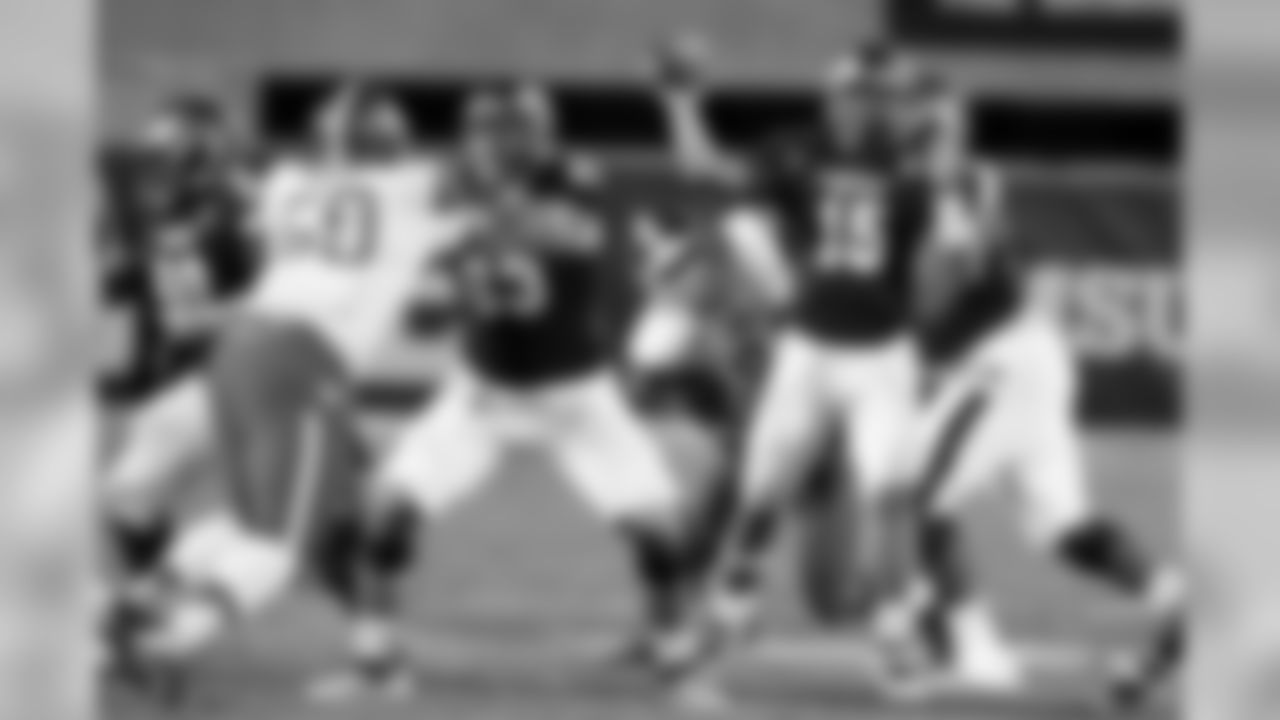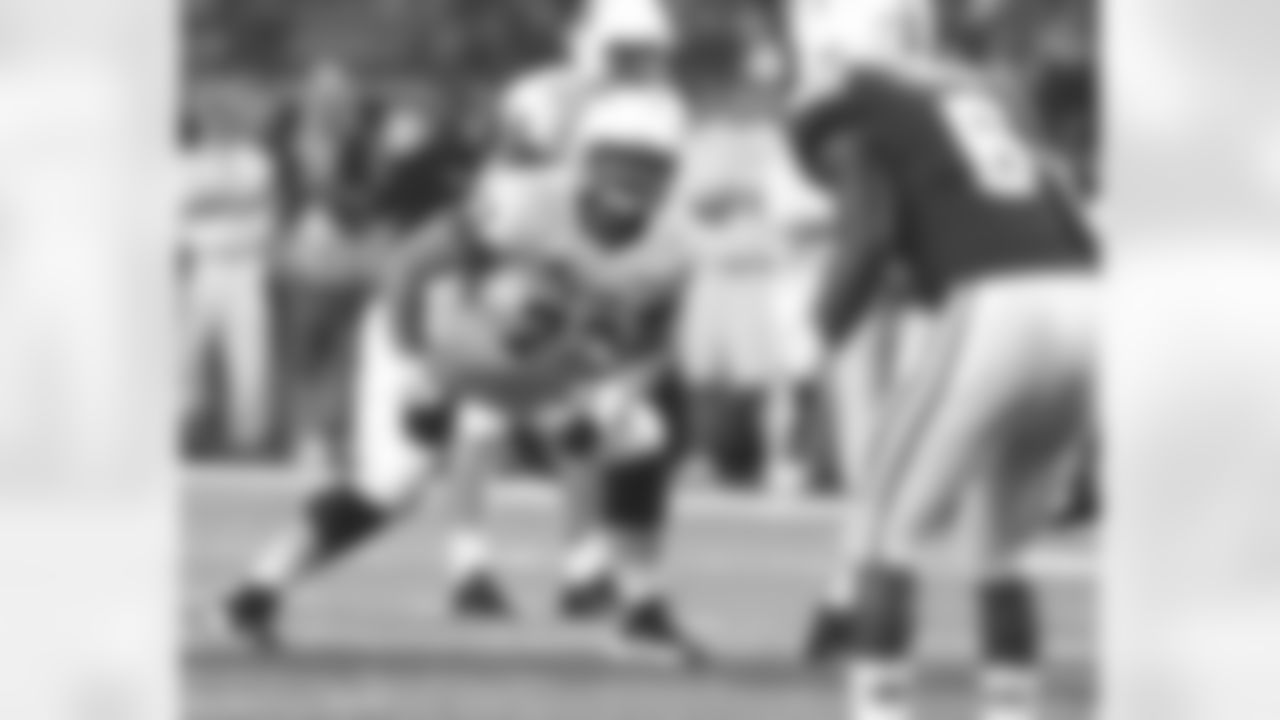**
Ben Swanson, DenverBroncos.com: So I come from a basketball background, where analytics have really taken off and a large part of that is because it's fairly straightforward in getting the tools to quantify impact: points, rebounds, assists, blocks, steals, etc. But football analytics are tougher for me given the larger number of players and the absence of stats for some positions. In short, what do football analytics focus on?**
Mitch Tanney, Broncos Director of Analytics: "In terms of football analytics and how it differs a little bit from some of the other sports, one of the biggest differences is the dependent relationships. So when you have 11 guys on the field on a side, you're talking about 11 on 11 versus essentially one-on-one in baseball—a pitcher and a batter—and five-on-five in basketball, so it makes things a little more complicated from an analytics perspective, but there's still information and insights that can be extracted from the data. And that's really what I'm trying to do is be able to extract information that can provide insight to the coaches, provide insight to personnel and ideally help us make more informed decisions."
**
Check out photos of the nine college free agents signed by the Broncos after the 2015 NFL Draft.























BS: Analytics in sports across the board has grown as not only an interest or passion but a profession in recent years. How did you come to find yourself working in analyzing sports statistics?**
MT: "I think what really kind of led me in that path was a lot of the upper-level math classes from my undergraduate work, it was more proof and more theory-based, so it was primarily focused on showing why things work than some of the lower-level math courses, and to me that wasn't the best fit. I was more interested in how I could apply some of the statistical methods and some of the logic that I was learning in some of those courses. And then, really, I was very fortunate; I had a great experience at the University of Iowa. One of my professors there actually conducts his research in sports analytics and I completed his course—it was a data in decisions course—and from that moment on I was, with my football background and being able to combine it with statistics, I was really geared toward 'Hey, I think there's something I could do professionally in combining those two fields.' Since then, I was really fortunate. I had an independent study with that professor, Jeff Ohlmann is his name, and he's been a great resource even since I've graduated, and I've been able to combine really two passions of mine, which is football and numerical analysis."
BS: Before you joined the Broncos, you worked for the Bears, your first time working in the league. How did you make the leap to work in the NFL?
MT: "That was my first job in the NFL, and it really led—came about as a result of my interactions with the Bears while I was employed by STATS. I was in a product management role and an analytics-based role with STATS, which is based in the northern suburbs of Chicago, so I was able to interact with a number of different NFL teams and the Bears were obviously close and one thing led to the next and I was very fortunate to have the position."
BS: And what did you take away from that, from your time with the Bears?
MT: "I think more than anything I just feel really fortunate I was able to have a job in the NFL, and there's 32 NFL franchises and I think maybe roughly half or a little more than half now have analytics positions and I think that number is going to continue to grow. I think more than anything, is being able to interact with front office personnel with coaches and being able to try to take something that's complex and try to make it more applicable so that it can be applied in a practice setting, a game setting."
BS: In broad strokes and perhaps not getting much into the nitty-gritty, what has your offseason been like with free agency, the draft and everything?
MT: "Without getting too much into the details, I think my kind of standard response is: 'Trying to help us win.' So as vague as that is, but taking a look at historical trends around the league, what certain teams are doing, what we've done from a self-scouting perspective and then also on the personnel side, trying to assist with the draft and college free agency shortly thereafter."
BS: Recently you went to the 2015 MIT Sloan Sports Analytics Conference, which showcases some of the top research in regards to the statistical study of sports. What did you take away from going?
MT: "I think more than anything, I think what I really benefitted from attending that conference is some of the research, whether it's PhD students, graduate level, masters students or just people in professional fields outside of sports that are conducting research. They conduct research in sports, it's a passion for them and they try to learn more and investigate new things and I really benefit from just listening to those presentations. I think there's some great ideas and you try to come back and once you get back to your desk, see what can be applied."
BS: I've heard plenty of misconceptions about analytics, mostly focused on the idea that people who value analytics completely disregard watching games, but I tend to think most simply value the added dimension and information it brings.
MT: "Yeah, that's exactly right. It's just another piece of the puzzle. Traditional scouting obviously there's vast amount of work that goes into scouting a player, and analytics is just one piece of that. Ideally when the subjective meets the objective, that's when you feel most confident going into the decision-making process. Really, it's just trying to add more information, try to look at things maybe from a different perspective, use a different lens and be able to have those conversations."
BS: One of the innovations the NBA put into place in the last couple years was implementing player-tracking infrastructure into their stadiums to see the spatial component. Do you think there's value in the NFL following suit?
MT: "I think the NFL is definitely moving that way with zebra technologies—who I think were either in 17 or 19 stadiums last year using different technology but essentially a player-tracking technology and the amount of data that will be accessible to teams is going to grow exponentially once that data becomes available. You're talking about 11-on-11 player tracking, that's a vast amount of data."






